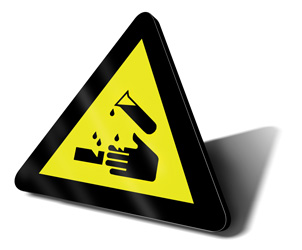 In June, President Obama signed into law the Frank R. Lautenberg Chemical Safety for the 21st Century Act, landmark legislation modernizing the decades-old Toxic Substances Control Act (TSCA), the little-known but very important federal law that regulates chemicals in the United States.
In June, President Obama signed into law the Frank R. Lautenberg Chemical Safety for the 21st Century Act, landmark legislation modernizing the decades-old Toxic Substances Control Act (TSCA), the little-known but very important federal law that regulates chemicals in the United States.
Approved by large bipartisan majorities in Congress, the Lautenberg Act addresses some of the major shortcomings of TSCA that had been identified by EPA, consumers, environmentalists, states and the chemical industry itself over the 40 years since TSCA’s passage in 1976. When TSCA was enacted, it “grandfathered” in, without any evaluation, more than 62,000 chemicals that were in commerce in this country at that time. Since then, few of those chemicals have been evaluated for their potential health and environmental impacts, despite improvements in science and technology. Moreover, TSCA did not even require EPA to make safety determinations about chemicals, and it put the burden on EPA to demonstrate that a chemical is unsafe before the agency could take action on it. The law also made it so difficult for EPA to require chemicals to be tested that EPA has been able to require health and environmental testing on fewer than 300 of the nearly 85,000 chemicals on the TSCA Inventory (EPA’s national list of chemicals in commerce).
Further, the old TSCA made it virtually impossible for EPA to take action on a chemical, even if it presented an unreasonable risk to health or the environment. As a result, EPA has been able to significantly limit or ban only five chemicals in 40 years. EPA has not even attempted to do so in more than 25 years, since a federal court overturned EPA’s rule banning most uses of asbestos in 1991.
The Lautenberg Act has changed all that. Among many things, the new law requires EPA to determine whether chemicals are safe (that is, whether they present an “unreasonable risk of injury to health or the environment under the conditions of use”). It gives EPA authority to issue orders requiring testing of chemicals, instead of having to go through a difficult and time-consuming rulemaking process. And it makes it easier for EPA to restrict — or ban — chemicals by eliminating the language in TSCA that was the basis for the 1991 court decision overturning EPA’s asbestos rule.
Given EPA’s significant new authority, even companies not in the chemical business need to understand the law’s potential impact on them and pay close attention to EPA’s actions to interpret and implement the new law. EPA already has begun work on several major rulemakings that must be completed within the next year, as well a number of policies, procedures and guidance documents that must be completed in two years. EPA also will soon begin to prioritize chemicals for review, collect data on chemicals and initiate risk evaluations on them.
While, ultimately, the law will mean fewer chemicals in the marketplace that present health or environmental risks, it also will present challenges for any company that manufactures, imports, processes, distributes and/or uses chemicals — or products that contain chemicals. Because the Lautenberg Act defines a chemical’s “conditions of use” very broadly, EPA will be considering the full range of pathways through which humans and the environment could be exposed to and affected by a chemical. This likely will result in greater restrictions on the uses of some chemicals (in order to reduce exposures), as well as outright prohibitions on others. Companies will need to adjust their business practices — and the products they make or use — to comply with these new requirements, and in some cases find alternatives to the chemicals and products they now manufacture, import, process, use or distribute.
Additionally, because EPA now has greater ability to require testing on chemicals, more companies will have to provide more data on their chemicals. And, because the new law limits confidential business information (CBI) claims, more information about chemicals and their potential effects will become publicly available.
Finally, companies will have to notify EPA by December 2017 of the chemicals they have manufactured, imported or processed during the last 10 years. If EPA does not receive this notice about a chemical, it will be deemed “inactive,” and no company will be able to continue making or importing the chemical — or using it in products they make — without further notifying EPA. Consequently, companies need to start thinking now about the chemicals they make or import or use in their products, to be sure they are not caught flat-footed when the December 2017 deadline arrives.
Steve Owens is a Principal with Squire Patton Boggs (US) LLP, based in the firm’s Phoenix and Washington, D.C., offices, and focuses his practice on environmental, safety and health issues. Owens previously served as EPA Assistant Administrator in charge of the agency’s Office of Chemical Safety & Pollution Prevention, which oversees EPA’s TSCA program.













Speak Your Mind
You must be logged in to post a comment.